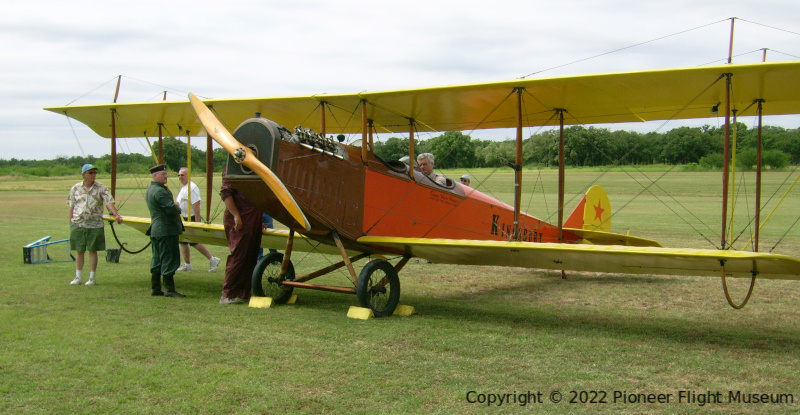
The Curtiss Aeroplane Company was a prominent early aircraft manufacturing company in the United States, contesting the Wright patents and developing many different aircraft of its own design including some of the first flying boats and seaplanes. Two of its early models were the model J and the model N, both two-seat tractor (with the engine in front) designs. In 1914, the better features of these designs were merged into the JN series, which was commonly known as the Jenny from its JN designation.

The JN series was adopted by the US Army as an observation aircraft in 1914, and later models were used as pilot trainers. By the time the United States entered the war, the series was up to the JN-4D model. Great Britain was also in need of trainers, and found the JN series quite acceptable. The orders from the US and Britain resulted in several factories being set up to manufacture the planes, including a factory in Toronto, Canada. This Canadian factory started out building JN-3 models, but moved on to the JN-4. Along the way, they made some changes to the design that weren’t found in US-produced JN-4s. These Canadian-built planes were known as JN-4 (Can) Canucks instead of Jennies. Between the US and Canadian production, several thousand JN-4s were built and some sources estimate that about 95% of US and Canadian pilots flew a JN during some part of their training.

After the war ended, the government started disposing of their surplus airplanes, and thousands of JNs were sold to the civilian market at extremely low prices. By the early 1920s, a JN-4 could be purchased for as little as $500. This led to the start of the barnstorming era, where ex-military pilots who wanted to keep flying would buy a cheap Jenny and fly from town to town selling rides to people who might never before have even seen an airplane. Some of these pilots joined together to form aerial circuses, setting up stunt demonstrations as well as hopping rides.
The Pioneer Flight Museum’s JN-4 is a Canadian-produced model, a JN-4 (Can). It has been restored several times by previous owners, as well as by the Museum. Rather than having a military paint scheme, we’ve chosen to finish it to represent a typical barnstormer’s aircraft from the early 1920s.

General characteristics
Length: 27 ft. 4 in. (8.33 m)
Wingspan: 43 ft. 7.38 in. (13.29 m)
Height: 9 ft. 10.63 in. (3.01m)
Seats: 2
Empty weight: 1390 lb (630 kg)
Max. Speed: 75 mph (121 km/h)